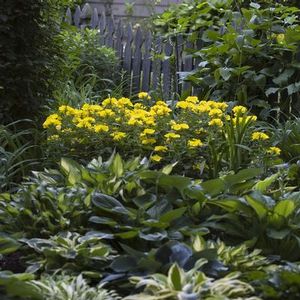Printed at http://www.newmoonnursery.com/index.cfm/
Oenothera fruticosa
Sundrops
Native to North America
FIRST IMPRESSIONS: Oenothera fruticosa is a spreading perennial wildflower with attractive reddish-purple evergreen winter rosettes. In spring slender reddish stems rise bearing lanceolate leaves. In summer, attractive red flower buds open to reveal bright yellow saucer shaped flowers. This species thrives in sunny or lightly shaded sites with dry or average well drained soils.
HABITAT & HARDINESS: Oenothera fruticosa occurs from Quebec to Nova Scotia and Florida and west to Manitoba, Michigan, Missouri and Louisiana.
This species is indigenous to moist or dry open woods, meadows, maritime grasslands, sandhills, flatwoods, rock outcrops, disturbed fields and roadsides.
Plants are usually found in sandy sunny sites in USDA Zones 4-9.
PLANT DESCRIPTION: Oenothera fruticosa is an upright clump forming perennial with multiple branched stems. Plants expand to form colonies from their vigorous roots and short rhizomes.
Stems are slender, pubescent and tinged with red. The leaves are lance shaped or narrowly oblong and are arranged alternately along the stems.
Leaf blades are deep green and narrowly lanceolate. They are up to 4” long and 1” wide with entire or serrate edges and pointed tips.
The stems terminate in attractive bright red buds. The buds open into dense clusters of 3-10 saucer shaped flowers. Each 2” poppy-like flower has four clear yellow petals and orange stamens.
Unlike other members of the Evening Primrose Family, this species is diurnal with flowers opening during the day. Flowering occurs for several weeks in late spring and early summer. Club shaped seed capsules form after flowering and persist into autumn.
In the Mid-Atlantic and Southeastern United States, attractive evergreen red-purple tinged rosettes persevere through the dormant season.
Plants grow 1-3’ tall with an equal spread.
CULTURAL & MAINTENANCE NEEDS: Oenothera fruticosa thrives in full sun and dry sandy acidic soil. Since plants flourish in loose humus rich soil, addition of organic matter may be beneficial in garden situations.
Plants tolerate light shade, heat, drought, gravelly loam, clay loam and variable soil pH.
This species is pest resistant and somewhat resistant to deer, rabbits and other herbivores.
LANDSCAPE USES: This is a good Groundcover for a Wildlife Garden or Meadow. Plants are also used as Butterfly Nectar Plants or as part of a Grouping or Mass Planting. Oenothera fruticosa has Showy Blooms and is appropriate for Cottage Gardens, Deer Resistant Plantings, Water-wise Landscapes, Low Maintenance Plantings, Rock Gardens and Perennial Borders.
COMPANION & UNDERSTUDY PLANTS: Try pairing Oenothera fruticosa with Asclepias tuberosa, Coreopsis major, Monarda punctata, Liatris microcephala and Phlox pilosa.
Oenothera fruticosa ‘Cold Crick’ has similar appearance and culture. This cultivar could be substituted in some garden situations. ‘Cold Crick’ would be a shorter more compact plant, however.
TRIVIA: Beetles, butterflies, skippers, honeybees and native bees visit Oenothera fruticosa flowers. Caterpillars of several moths feed on the foliage. Hummingbirds visit the flowers for nectar and to feed on small insects. Eastern goldfinch, mourning dove and other songbirds eat the seed.
This species and other members of the Onagraceae (Evening Primrose) family have unique sepals that reflex downward at the base of the flower or seed capsule.
Height:
1-3 ftSpread:
1-3 ftSpacing:
2 ftUSDA Hardiness Zone:
4-9Bloom Color:
YellowOenothera fruticosa Characteristics
Attracts Wildlife
- Butterflies
- Songbirds
- Pollinators
- Hummingbirds
Attributes
- Naturalizing
- Ground Cover
- Drought Tolerant
- Rock Garden
Exposure
- Full Sun to Partial Shade
Deer Resistant
- Deer Resistant
Flowering Months
- June
- May
Foliage Color
- Green
Groundcover Foot-Traffic Tolerances
- Moderate
Growth Rate
- Fast
Juglans nigra Tolerance (Black Walnut)
- Yes
Season of Interest (Foliage)
- Fall
- Summer
- Spring
Soil Moisture Preference
- Moist to Dry
Interesting Notes:
For more information on this plant, visit the USDA PLANTS Database: http://plants.usda.gov/java/profile?symbol=OEFR

